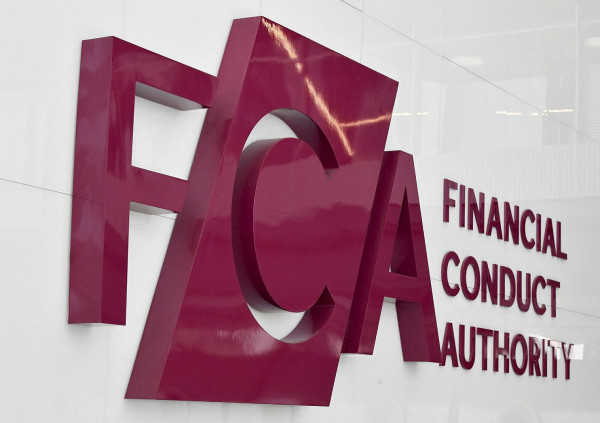
Consumer duty: FCA provides clarity on products and services outcome

As part of the consumer duty the FCA said it wants all products and services for consumers to be fit for purpose and designed to “meet the needs, characteristics and objectives of a target group of customers and distributed appropriately".
Speaking on the Inside FCA podcast, manager of consumer policy outcomes at the regulator, Richard Wilson outlined what the FCA means by this.
“Simply put, we want to see products and services designed to meet the needs of a clearly defined target market and then we want firms to monitor and see what happens in practice,” Wilson said.
He outlined that firms will be expected to ensure products and services work as expected and ensure they are only being sold to the right people - the people in the clearly defined target market.
“If firms do this, so they put in place good governance and oversight of their products and services, and then they act on what they see in any problems then this will be a big step towards our overall objective of delivering good consumer outcomes,” Wilson said.
Wilson explained this obligation of the consumer duty will work in tandem with existing product governance in sectors like investments, insurance and funeral plans but will go a step further to cover all products and services, no matter how long ago they were launched.
The consumer duty will apply across all financial sectors where there is a retail customer while the rules covering products and services will apply equally to both.
“That's one of the things that we’re really keen to achieve with the new consumer duty, because I think in the past there has perhaps been thinking that these kinds of governance and oversight only really apply to products,” Wilson said.
He continued: “Whereas, actually we want it to apply to services as well. That can obviously include things like advice services, payment services, but also kind of just the ordinary sort of distribution services that firms are doing.”
Wilson gave the example of how a distributor firm will often be a manufacturer of their own distribution service as well as a distributor of a product that they are selling.
For these sort of firms they will need to think about the target market for their advice or the broking that they are offering.
Identifying your target market
When it comes to identifying a firm’s target market the consumer duty rules require that it is done at a “sufficiently granular level”.
“As a rule of thumb, I would say the target market should be defined in enough detail to avoid including any groups of customers who would suffer harm from that product or service,” Wilson said.
He added: “So, what we don't want to see is vague or very broadly defined target markets that might include groups who actually wouldn't benefit from the product or service.”
He also noted that the risks and complexities of the product or service need to be considered.
“The simpler and less risky a product or service is, the wider the target market is likely to be,” Wilson said.
This means that for some products or services the target market will be “very, very broad”.
“For a more risky or complex product, it might only be appropriate for a much narrower group, a group who can understand the risks and the complex features of that product and really make use of and benefit from that product and all its features,” Wilson explained.
Firms will be expected to monitor outcomes for the customers under the consumer duty so if a firm identifies an issue affecting a group of customers in a target market they may want to change their distribution strategy.
Dealing with vulnerable customers
Under this outcome of the consumer duty, firms will not be expected to review individual consumers or track their potential vulnerability.
Wilson explained this is because customers may move in and out of vulnerable circumstances at any stage and therefore the target market for a product or service is always likely to include some vulnerable customers.
“Instead, what we really want is for firms to consider whether their product or service has features that could risk harm for any group of customers,” Wilson said.
If it does, the regulator wants firms to take steps to mitigate those risks.
The consumer duty will also mean that firms will be expected to test their products and services in order to avoid foreseeable harm and to avoid adversely affecting groups of customers.
What's appropriate will vary depending on the product or service, according to Wilson.
“In all cases though, it's likely to mean thinking through things such as, how the needs and situations of consumers in the target market are likely to change.
“For some products it can be quite complex, quantitative testing for instance, looking at how investments might perform in different economic scenarios.
“So, it's going to be different in different situations,” Wilson said.
Manufacturing firms will be expected to have reviewed any product or service already on the market and will continue to be sold after July 2023 by the end of April this year.
This milestone is in place to allow firms to make any necessary changes before the rules come into force in July.
Firms will need to review their products and services regularly, but the FCA has not been prescriptive in how often this needs to be done.
Wilson said this is because it recognises that there is a whole range of different scenarios out there and when deciding the appropriate time for a review firms need to consider: “the nature and complexity of the product and service, the nature of the customer base, any indication of customer harm.”
When it comes to how the FCA will assess and monitor a firm’s plans under the products and services outcome Wilson explained that there are a number of questions the regulator might ask a firm, such as:
- How has the firm satisfied itself that its products and services are well designed to meet the needs of customers in the target market and that they perform as expected?
- How is the firm monitoring that the products and services are being correctly distributed to the target market?
jane.matthews@ft.com



